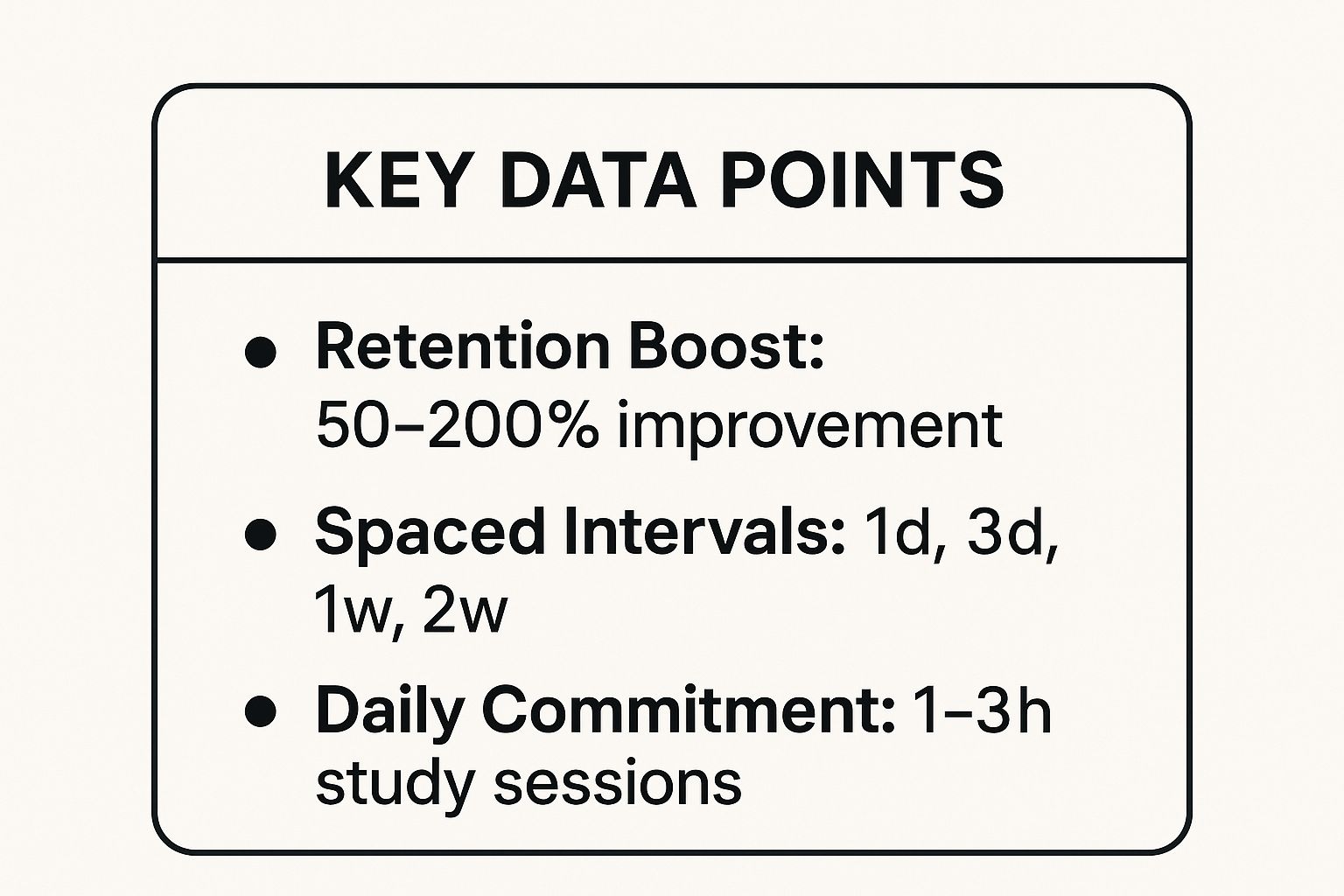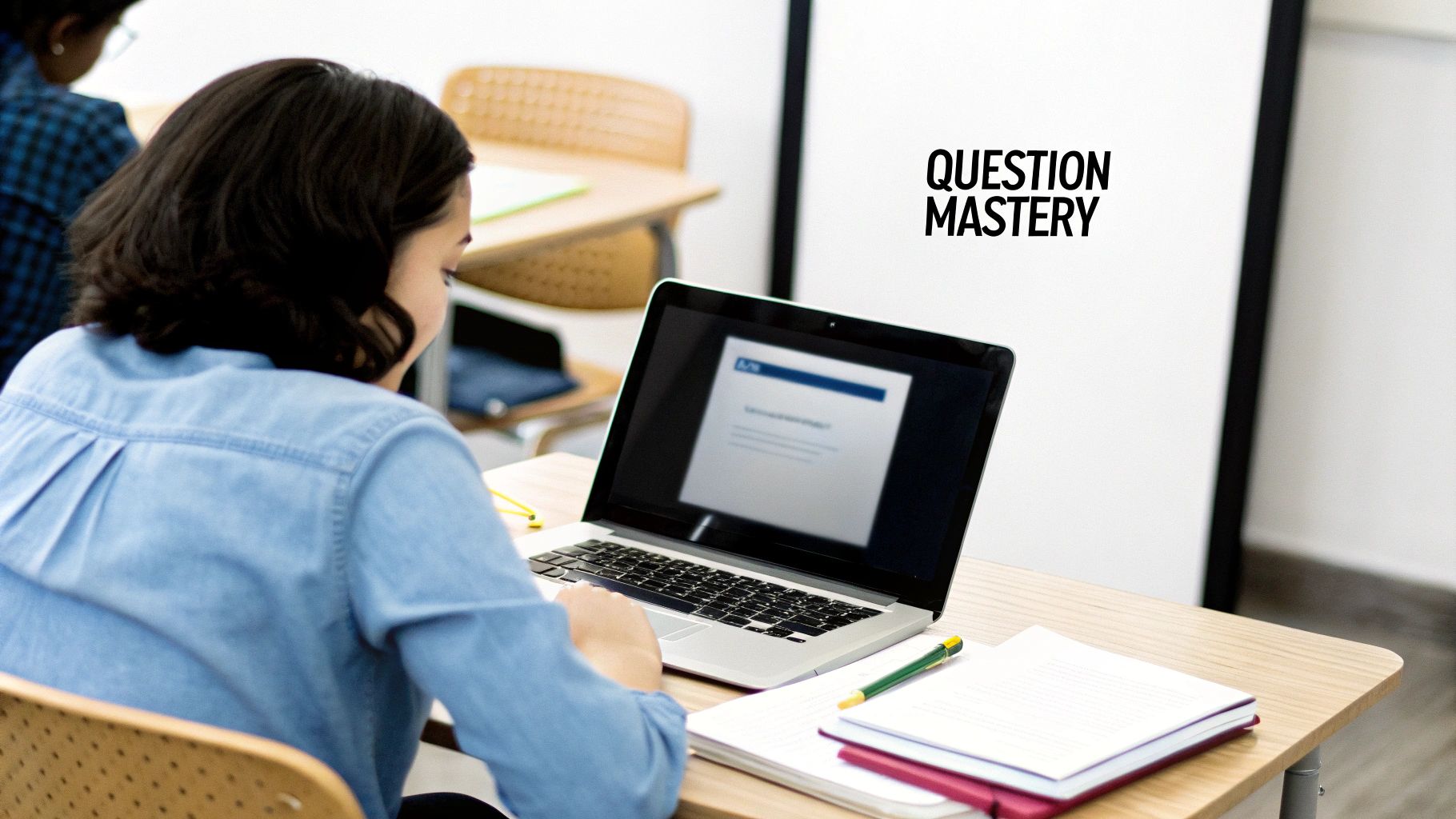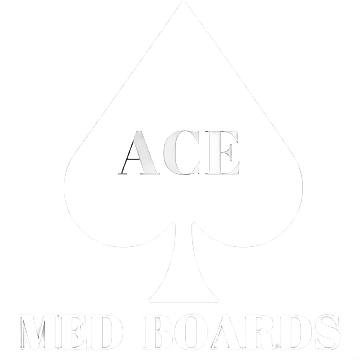Preparing for the USMLE series is a marathon, not a sprint. It demands more than just rote memorization; it requires a strategic, multifaceted approach to learning, retention, and application. The sheer volume of information for Steps 1, 2, and 3 can feel insurmountable, leaving many students overwhelmed and unsure where to begin. But what if you could replace that anxiety with a clear, actionable plan built on proven, high-yield techniques?
This guide cuts through the noise to provide a definitive roundup of the most effective USMLE study tips. We'll move beyond generic advice like "study hard" and delve into specific, evidence-based strategies that top-scoring physicians have used to conquer the boards. From leveraging cognitive science with active recall to strategically dissecting practice exams, each of these seven tips is a crucial component of a comprehensive preparation system. While focusing on these USMLE-specific techniques, exploring broader educational success strategies can also enhance your overall learning approach, especially when using online resources. Get ready to transform your study routine into a powerful, efficient engine for success and build the lasting clinical knowledge needed to excel.
1. Tip #1: Master Content with Active Recall and Spaced Repetition
The foundation of modern, effective medical education isn’t just reviewing material; it's actively retrieving it from your memory. Active recall, the process of self-testing without prompts, combined with spaced repetition, reviewing information at increasing intervals, is a scientifically-backed method that dramatically enhances long-term retention. This approach transforms studying from a passive, low-yield activity into a high-impact workout for your mind.
For an exam as comprehensive as the USMLE, where you must recall facts from months or even years ago, this is a non-negotiable strategy. Unlike passively reading, which creates a fragile 'illusion of knowing', these techniques force your brain to build stronger neural pathways to the information. By systematically spacing out your reviews, you leverage the psychological spacing effect, ensuring high-yield facts are cemented in your long-term memory and ready for recall on exam day.
How to Implement This Strategy
The most popular tool for this method is Anki, a flashcard app that automates spaced repetition. Successful students often start with high-quality, pre-made decks like AnKing (a comprehensive deck combining Zanki and other resources) and then customize them.
- Create Custom Cards: Use image occlusion cards for anatomical structures or radiological images. Employ cloze deletions (fill-in-the-blanks) for complex pathophysiology to test your understanding of pathways.
- Daily Commitment: Consistency is key. Even a dedicated 30-minute session daily can make a significant difference over months. Most high-scorers integrate 1-3 hours of Anki into their schedule.
- Trust the Algorithm: Let the spaced repetition software determine when you need to see a card again. Avoid resetting decks or manually reviewing cards outside of the schedule.
The following infographic summarizes the core principles of an effective spaced repetition schedule.

These metrics highlight how a structured daily commitment, paired with scientifically-timed review intervals, leads to substantial gains in knowledge retention. This method is one of the most powerful USMLE study tips because it directly addresses the challenge of remembering vast amounts of information over a long period. For a deeper dive, you can learn more about how active recall benefits medical students.
2. Tip #2: Question Bank Intensive Practice
Beyond content mastery, success on the USMLE requires a deep understanding of how that knowledge is tested. Intensive practice with a high-quality question bank (Qbank) is the single most effective way to develop clinical reasoning, recognize question patterns, and build test-taking stamina. This systematic approach transitions your studying from passive knowledge acquisition to active, exam-style application.
For an exam that heavily weighs clinical vignettes, Qbanks are not just assessment tools; they are primary learning resources. Data consistently shows a strong correlation between the number of practice questions completed and final USMLE scores, with students completing over 3,000 UWorld questions often seeing score increases of 15-25 points. Top performers frequently use multiple Qbanks (like UWorld, Kaplan, and AMBOSS) to expose themselves to varied question styles and explanations, effectively turning practice into a core part of their curriculum.

How to Implement This Strategy
A common mistake is saving Qbanks for the final weeks of study. Instead, integrate them early and systematically. The goal is not just to answer questions but to learn from every single one, including those you answer correctly.
- Start with Tutor Mode: Early in your preparation, use tutor mode to get immediate feedback and read explanations right after answering. This helps solidify concepts as you learn them.
- Progress to Timed Blocks: As you get closer to your dedicated study period, switch to timed, random blocks of 40 questions to simulate exam conditions and improve your pacing.
- Deconstruct Every Explanation: The real value is in the explanations. Read every word, for both correct and incorrect answers, to understand why the right answer is correct and why the distractors are wrong. Many students report the UWorld explanations are their main learning source.
- Systematize Your Review: Create a system for your incorrects. Many students create custom Anki cards for concepts they missed, turning weaknesses into strengths. Aim to review your incorrect answers from a block within 24 hours.
- Maintain High Volume: During your dedicated study period, aim to complete and thoroughly review at least 80 questions daily. This volume builds the mental endurance needed for the 8-hour exam day.
This approach is one of the most powerful USMLE study tips because it directly trains the skills required to succeed on exam day. By treating your Qbank like a textbook, you actively engage with the material in the exact format you will be tested on. For more on the leading Qbank, you can explore the UWorld USMLE resources.
3. Tip #3: Use First Aid as Your Central Information Hub
For decades, First Aid for the USMLE Step 1 has been the definitive high-yield resource, and for good reason. The most successful students don't just read it; they transform it into a personalized, consolidated master reference. This integration strategy involves using the book as a central hub to organize and synthesize information from all your other study materials, such as question banks, video lectures, and review books.

This method turns a passive reading tool into an active learning system. By annotating First Aid with insights from UWorld, key points from Pathoma, or mnemonics from Sketchy, you create a single, comprehensive source of truth. This prevents knowledge fragmentation and ensures that when you review a topic in First Aid, you are also reviewing the most critical, integrated concepts from all your resources. This is one of the most powerful USMLE study tips because it builds a cohesive, interconnected knowledge base that mirrors the exam's multidisciplinary nature.
How to Implement This Strategy
The goal is to make your copy of First Aid an evolving document that grows with your understanding. Start this process early in your dedicated study period and be consistent. Top scorers often review their annotated copy 3-5 times, with each pass reinforcing the integrated information.
- Develop a Legend System: Use different colored pens or highlighters to represent different resources. For example, use a red pen for UWorld notes, green for Pathoma concepts, and blue for personal insights or weak areas. This visual organization helps you quickly identify the source of an annotation.
- Cross-Reference Aggressively: When you get a UWorld question wrong, don't just read the explanation. Find the corresponding topic in First Aid and write a concise summary of the key learning point directly onto the page. Reference the UWorld QID for future review.
- Utilize Physical and Digital Tools: Use sticky tabs to mark pages you frequently revisit or find difficult. If you're using a digital version of First Aid, leverage annotation tools to add notes, links, and even screenshots from other resources.
By centralizing your knowledge, you streamline your final review period, allowing you to focus on a single, perfectly curated resource instead of juggling multiple books and notes. This organized approach is a cornerstone of efficient and effective USMLE preparation. You can explore more about maximizing this resource with advanced techniques in this guide to using First Aid effectively.
4. Tip #4: Embrace Video-Based Learning with Pathoma and Sketchy
A powerful learning modality for the USMLE involves leveraging high-quality educational videos to master complex medical concepts. Platforms like Pathoma, Sketchy, and Boards and Beyond have revolutionized medical education by transforming dense textbook material into engaging, digestible, and memorable video lectures. This visual and auditory approach uses storytelling, expert instruction, and clever mnemonics to make difficult topics stick, proving especially effective for visual and auditory learners.
For subjects like pathology, microbiology, and pharmacology, which are notoriously detail-heavy, this method is a game-changer. Instead of just reading about a disease process, you can see it explained step-by-step by an expert like Dr. Husain Sattar. Similarly, Sketchy uses elaborate visual mnemonics, or "memory palaces," to help you permanently link microbes and drugs to their specific characteristics. This approach is one of the most effective USMLE study tips because it significantly enhances comprehension and long-term retention of high-yield information.
How to Implement This Strategy
Simply watching videos passively is not enough; active engagement is crucial to turn viewing time into productive study time. The goal is to integrate these resources seamlessly into your broader study plan, using them to build a strong conceptual framework that you reinforce with other methods like practice questions and Anki.
- Annotate and Engage: Follow along in the corresponding workbooks (like the Pathoma text) or take your own notes. This active participation prevents passive viewing and helps consolidate information.
- Optimize Your Time: Watch videos at 1.5x to 2x speed to cover more ground, especially during a second pass or review. Re-watch particularly difficult sections multiple times until the concepts are clear.
- Create Your Own Resources: Immediately after watching a video, create your own Anki cards on the key takeaways. This solidifies your understanding and integrates the content directly into your spaced repetition schedule.
- Supplement, Don't Replace: Use these videos as a primary learning tool to understand concepts, but not as your only resource. Your learning must be validated and reinforced with UWorld questions and NBME practice exams.
This video provides an excellent overview of how to effectively integrate Sketchy into your USMLE Step 1 preparation.
By actively integrating these powerful video resources, you can build a deeper, more intuitive understanding of medicine's most challenging topics, translating directly into better performance on exam day. For more information, you can explore the resources at Pathoma and Sketchy.
5. Tip #5: Implement Comprehensive Study Schedule Planning
Failing to plan is planning to fail, and nowhere is this truer than in USMLE preparation. A comprehensive study schedule is your strategic roadmap, transforming a mountain of content into a manageable, day-by-day process. It goes beyond simply listing topics; it involves a systematic approach that balances content review, question practice, and regular assessments, ensuring every study hour is purposeful and productive.
A well-structured plan is a powerful tool for accountability and progress tracking. Data suggests that students who follow a detailed schedule consistently score higher, often by a margin of 20 points or more, than those who study without one. By allocating specific blocks of time and setting measurable goals, you create a framework that minimizes decision fatigue and maximizes efficiency, which is one of the most effective USMLE study tips for long-term success.

How to Implement This Strategy
The key is to create a realistic, adaptable plan. A successful long-term schedule, such as one spanning six months, often allocates the initial phase to building a content foundation (around 40% of the time) before shifting focus heavily toward question banks and practice exams (the remaining 60%).
- Use Digital Tools: Leverage calendars or specialized apps to map out your entire study period. To effectively manage your study materials and timeline, you might consider how you can utilize Notion for academic research and study planning.
- Build in Flexibility: Always include buffer days in your schedule. These "catch-up" days are critical for accommodating unexpected challenges, difficult topics that require more time, or simply when you need a mental break.
- Schedule Regular Check-ins: Dedicate time each week, perhaps on a Sunday evening, to review your progress. Assess what you accomplished, identify areas of weakness, and adjust the upcoming week's plan accordingly.
- Prioritize Well-being: Your schedule must include protected time for rest, exercise, and social activities. Burnout is a significant risk, and scheduling breaks is a proactive strategy to maintain peak performance.
This strategic planning ensures you cover all necessary material without cramming, allowing for deeper learning and retention. To see a sample framework, you can learn more about crafting a high-yield USMLE study plan.
6. Weak Area Identification and Targeted Review
A common pitfall in USMLE preparation is spending equal time on all subjects, regardless of your personal proficiency. The key to efficient and high-impact studying is a data-driven approach that pinpoints your specific knowledge gaps and dedicates focused effort to remediating them. This strategy involves using analytics from practice questions to systematically identify and strengthen your weakest areas, turning them into points of confidence.
This method transforms your study plan from a blanket review into a targeted surgical strike. Instead of guessing where you need to improve, you use hard data from your QBank and practice exam performance to guide your efforts. Studies have shown that students who dedicate a significant portion of their time, around 70%, to their weakest subjects can see score improvements of 25 points or more. This is one of the most effective USMLE study tips because it directly maximizes your return on study time.
How to Implement This Strategy
Leading resources like the UWorld analytics system, Kaplan's diagnostic tools, and NBME subject exams are designed to facilitate this process. They provide detailed performance breakdowns by subject, system, and even question type (e.g., pharmacology, pathology).
- Perform Regular Data Analysis: Set aside time once a week to review your QBank analytics. Look for subjects where your percentage correct is significantly lower than your overall average. Daily analysis can be overwhelming and statistically noisy; a weekly review provides a more stable trend.
- Focus, Don't Scatter: Concentrate your efforts on just two or three weak areas at a time. Trying to fix everything at once leads to superficial learning. Once you see improvement, you can rotate in another low-performing subject.
- Use Diverse Resources for Tough Topics: If a specific area like cardiology pharmacology remains a weakness, don't just reread the same book. Supplement your review with a different video resource (like Boards and Beyond), a different QBank, or relevant First Aid sections to gain a new perspective.
- Maintain Your Strengths: While focusing on weaknesses is crucial, don't completely neglect your strong subjects. A quick review or a small block of questions per week is often enough to maintain that knowledge and prevent it from degrading. This balanced approach ensures steady progress across the board.
7. Tip #7: Use Practice Exam Scores to Predict Performance and Guide Your Study
A strategic approach to practice exams is one of the most powerful tools for gauging your USMLE readiness. Beyond simply doing questions, this involves using NBME (National Board of Medical Examiners) practice exams and UWorld Self-Assessments (UWSAs) to accurately predict your performance, identify weaknesses, and make data-driven decisions about your study plan and test date.
These standardized tests are designed to simulate the real exam's difficulty and scoring, providing a reliable benchmark. Understanding the correlation between your practice scores and potential USMLE outcome is critical. For instance, many students find their final score is within 10-15 points of their average on recent practice exams. This insight transforms your preparation from guesswork into a calculated process, allowing you to adjust your focus and timing with confidence.
How to Implement This Strategy
The goal is to use these exams as diagnostic tools, not just as assessments. By analyzing your performance trends over several tests, you can see if your study methods are effective and whether you are on track to meet your score goal.
- Simulate Test Day: Take every practice exam under strict, timed conditions. This includes adhering to break times and eliminating all distractions to build stamina and acclimate to the exam environment.
- Space Exams Appropriately: Schedule practice tests 1-2 weeks apart during your dedicated study period. This gives you enough time to thoroughly review the previous exam and implement changes to your study plan.
- Track Your Score Trend: Focus on the overall trend of your scores rather than fixating on a single result. A consistent upward trajectory is a strong indicator of progress. Many successful students take at least 4-6 practice exams to establish a reliable performance baseline.
- Review Thoroughly: Dedicate significant time to reviewing every question, both correct and incorrect. Understand why the right answer is right and, just as importantly, why the wrong answers are wrong.
This methodical use of practice exams is one of the most crucial USMLE study tips for turning a potential pass into a high score. It provides the objective data needed to know when you are truly ready to sit for the exam. To better understand how to leverage these tools for Step 2, you can explore more about NBME practice exams for Step 2.
7 Key USMLE Study Strategies Compared
| Method | Implementation Complexity 🔄 | Resource Requirements ⚡ | Expected Outcomes 📊 | Ideal Use Cases 💡 | Key Advantages ⭐ |
|---|---|---|---|---|---|
| Active Recall and Spaced Repetition | Moderate – requires setup and daily commitment | Moderate – digital tools like Anki needed | High retention boost (50-200%) and knowledge gap identification | Long-term retention and efficient study | Proven retention increase, confidence building, efficient time use |
| Question Bank Intensive Practice | Moderate to High – extensive daily question practice | High – subscriptions can be costly | Improved clinical reasoning, time management, 15-25 point score gain | Exam simulation, test-taking skills, identifying gaps | Mimics real exam, detailed analytics, builds exam stamina |
| First Aid Integration Strategy | Low to Moderate – annotating and cross-referencing | Low – First Aid book plus supplementary resources | Structured framework, 10-15 point average score increase | Final review, consolidation of diverse materials | Widely recognized, comprehensive high-yield coverage |
| Video-Based Learning with Pathoma and Sketchy | Low – passive watching with note-taking | Moderate – subscription costs may apply | Better memory for complex topics, reduced fatigue | Visual and auditory learners, difficult subjects | Engaging, expert-led explanations, strong visual mnemonics |
| Comprehensive Study Schedule Planning | High – detailed planning and constant adjustments | Low to Moderate – mainly planning tools | Better coverage, reduced anxiety, measurable progress | Overall study management for long preparation | Structured approach, progress tracking, balanced study phases |
| Weak Area Identification and Targeted Review | Moderate – requires consistent analytics tracking | Moderate – depends on analytics tools | Efficient study time use, 25+ point improvement potential | Personalized remediation and focus on weaknesses | Objective progress measures, targeted study, prevents overconfidence |
| Practice Exam Strategy and Score Correlation | Moderate – scheduling and analysis of multiple practice exams | Moderate to High – cost per exam | Realistic score prediction, readiness assessment | Final preparation, test readiness evaluation | Accurate score forecasting, exam familiarization, strategic prep |
Integrating Your Strategies for Peak Performance
Navigating the immense challenge of the USMLE Steps is not about finding a single magic bullet. Instead, true success lies in building a cohesive, integrated system where each component reinforces the others. The seven core strategies detailed in this guide, from active recall to practice exam analysis, are powerful on their own. However, their real potential is unlocked when you weave them together into a seamless study machine.
Think of your preparation as a dynamic feedback loop. The insights you gain from your QBank blocks should directly inform your targeted review. That targeted review, in turn, is where you dive back into First Aid and video resources like Pathoma or Sketchy to solidify your understanding. Your daily Anki reviews ensure that this newly consolidated knowledge isn't forgotten, transforming it from short-term memory into a permanent part of your clinical reasoning toolkit. This synergy is what separates a passing score from an exceptional one.
Building Your Personal Study Engine
Your personalized study schedule is the blueprint that holds this entire structure together. It’s not just about blocking out hours; it’s about strategically allocating time for each critical activity. A well-designed schedule ensures that you consistently hit all the major pillars of effective USMLE study tips:
- Daily Non-Negotiables: Schedule dedicated time for QBank questions and Anki reviews. These are the engines of knowledge acquisition and retention.
- Targeted Remediation: Use the analytics from your QBank performance to schedule focused review sessions on your specific weak areas.
- Validation and Adjustment: Your full-length practice exams (NBMEs) are not just predictive tools. They are diagnostic instruments that validate your entire approach or signal the urgent need for adjustment. A drop in a specific subject on a practice test should immediately trigger a change in your weekly focus.
By mastering this integrated approach, you move beyond passively consuming information and start actively directing your own learning. You are no longer just checking boxes; you are executing a deliberate, goal-oriented campaign designed for peak performance. This methodical process builds not only a deep knowledge base but also the unshakeable confidence required to walk into the testing center and excel. You have the tools, and now you have the plan to connect them.
If you're struggling to build this integrated system or need expert guidance to pinpoint and eliminate persistent weak spots, consider personalized tutoring. Ace Med Boards specializes in creating customized study plans that connect these proven strategies, ensuring you study smarter, not just harder. Visit Ace Med Boards to learn how one-on-one support can help you achieve your target score.

